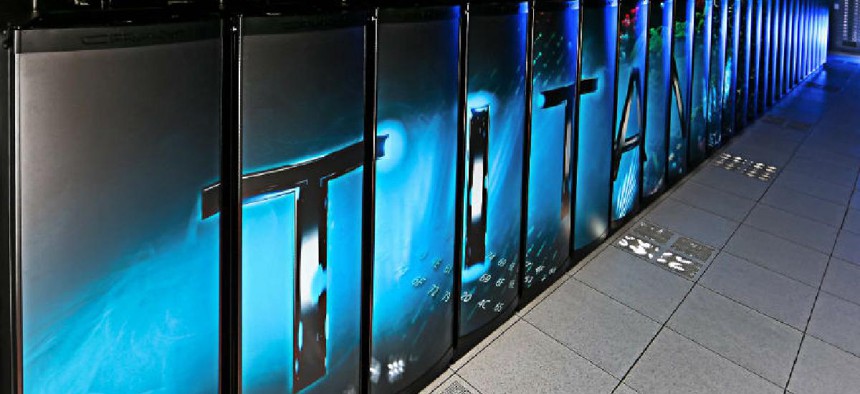Energy plans $500M exascale supercomputer

The United States will soon have its first exascale computer as it ramps up its supercomputing development to compete with China.

The Titan supercomputer at Oak Ridge National Laboratory.
The United States will soon have its first exascale computer.
The Department of Energy's Argonne National Laboratory outside of Chicago will house Aurora, the first U.S. computer capable of 1 exaflop performance -- 1 quintillion calculations per second. Intel Corporation and Cray expect to deliver the computer in 2021 on a contract worth more than $500 million.
The world's most powerful supercomputer, housed at Tennessee's Oak Ridge National Lab, has a peak performance of 200 petaflops -- about 200 trillion calculations per second. Aurora will be able to handle both traditional high-performance computing and artificial intelligence operations.
The department expects the system to develop massive-scale space simulations, model drug response predictions and improve extreme weather forecasting, among other scientific problems.
"Imagine a computer so powerful that it could predict future climate patterns… it can simulate every activity of a cancer cell at the subatomic level with such accuracy we could effectively cure it or create a personalized treatment … help solve the riddle of dark matter and what the universe is made of," said Paul Kearns, director of the Argonne National Labs, at the public announcement March 18. "This type of computing power is not the stuff of science fiction. We are on the cusp of achieving it today."
Energy Secretary Rick Perry said the field of artificial intelligence and supercomputer is one "we cannot fall behind in."
“That's why we have committed to building three new exascale machines which will be 10 to 20 times faster than the faster machines operating today."
The announcement comes amid a global arms race for supercomputing power. China especially has invested heavily in emerging technology and supercomputing and, by comparison, has plans to build an exascale-level computer by 2020.
“This is a big deal,” said Stephen Ezell, vice-president of global innovation policy at the Information Technology and Innovation Foundation, noting that the development of an exaflop computer has enormous implications for national security, cryptography and in the commercial sector.
"It signals that the United States is keeping pace internationally being at the leading edge of development of the world’s fastest computing systems." Ezell said.
The commitment to exascale represents another step in the government's focus on emerging and future computing powers.
In April 2018, Energy put out a request for proposals for two other exascale computer systems to be deployed by 2023, one at Oak Ridge and another at Lawrence Livermore National Laboratory in Livermore, Calif. The two could be worth as much as $1.8 billion.
The White House’s budget for fiscal year 2020 requested $500 million for exascale computing.
NEXT STORY: FCW Insider: March 18





